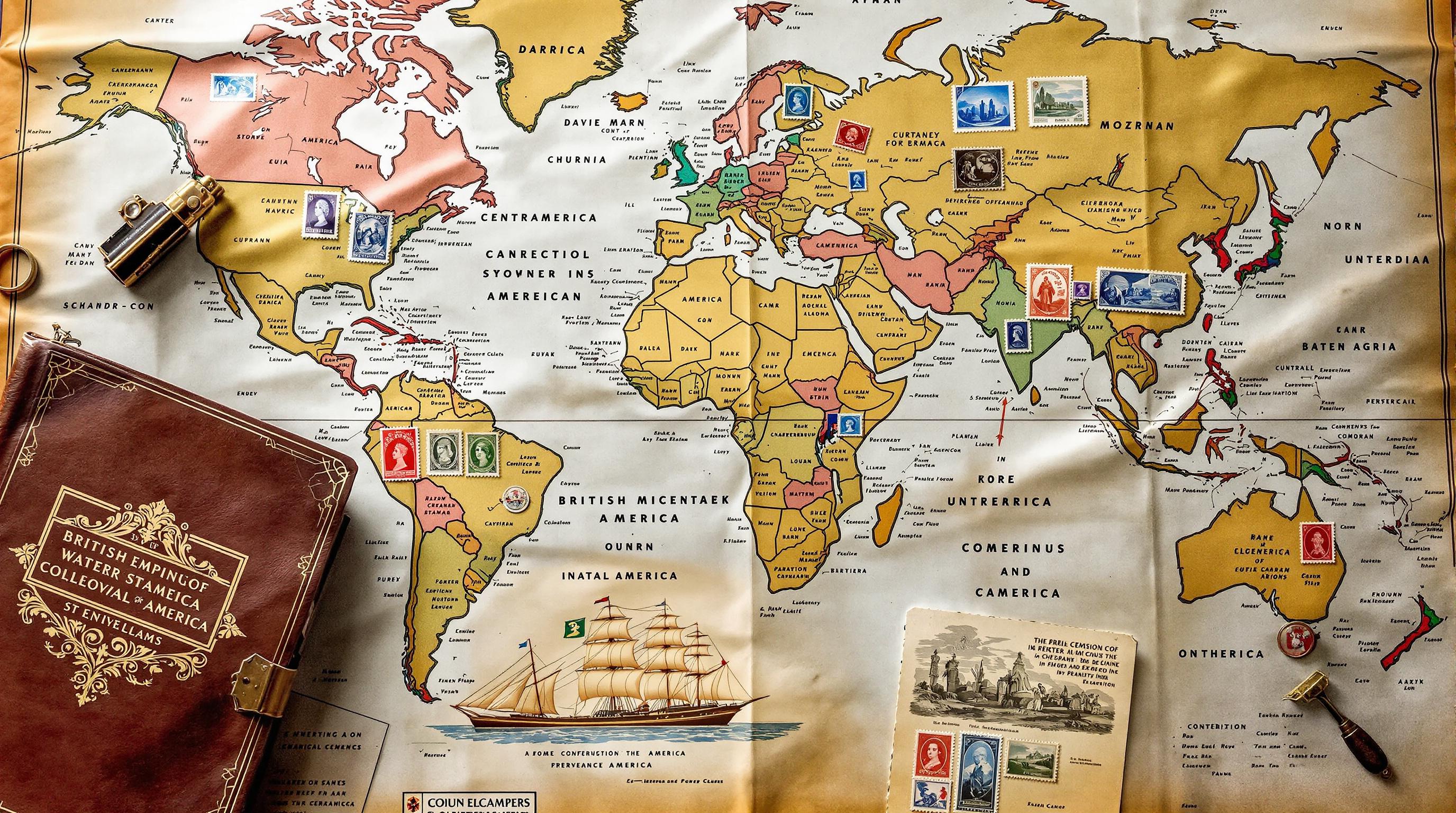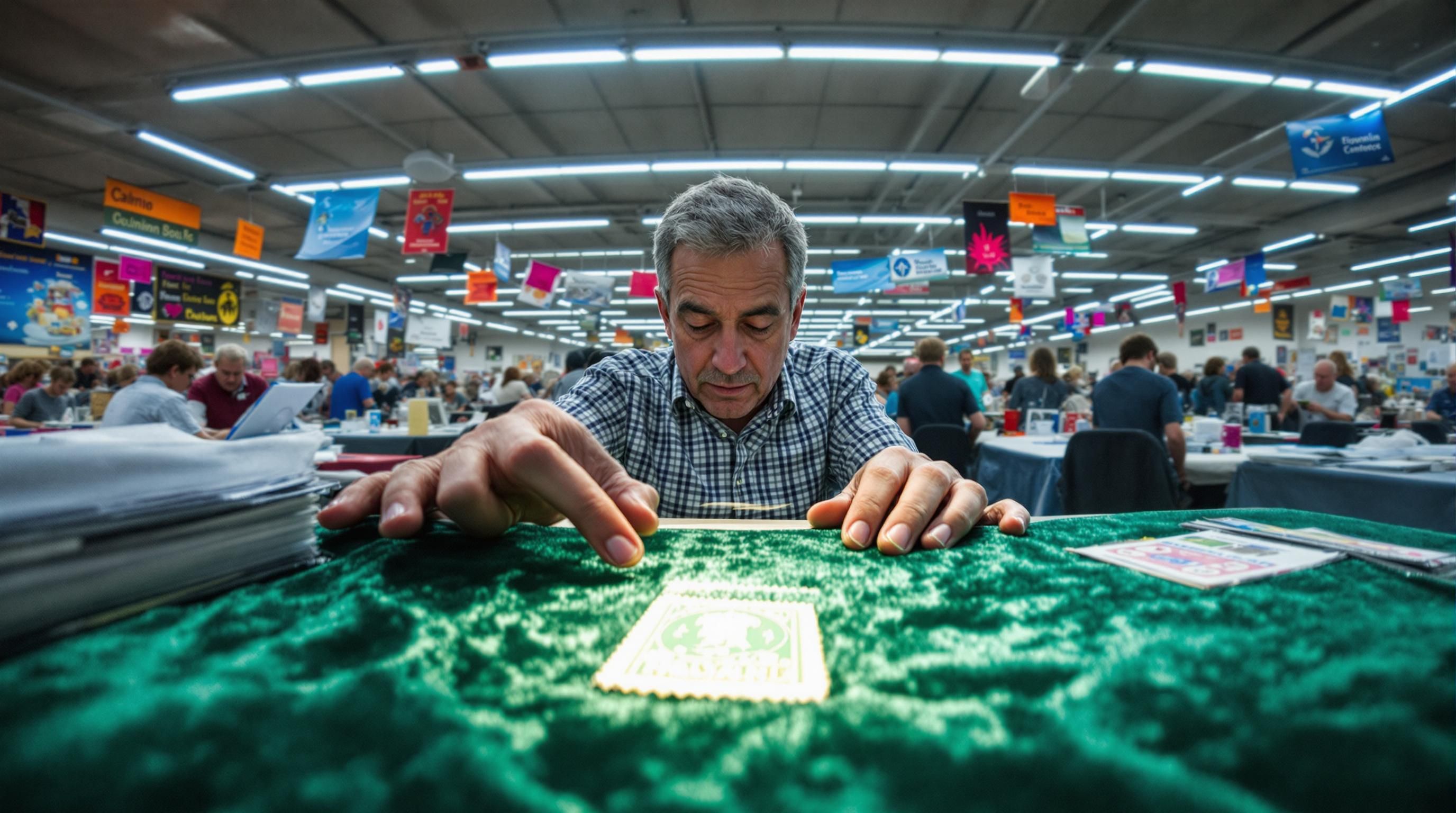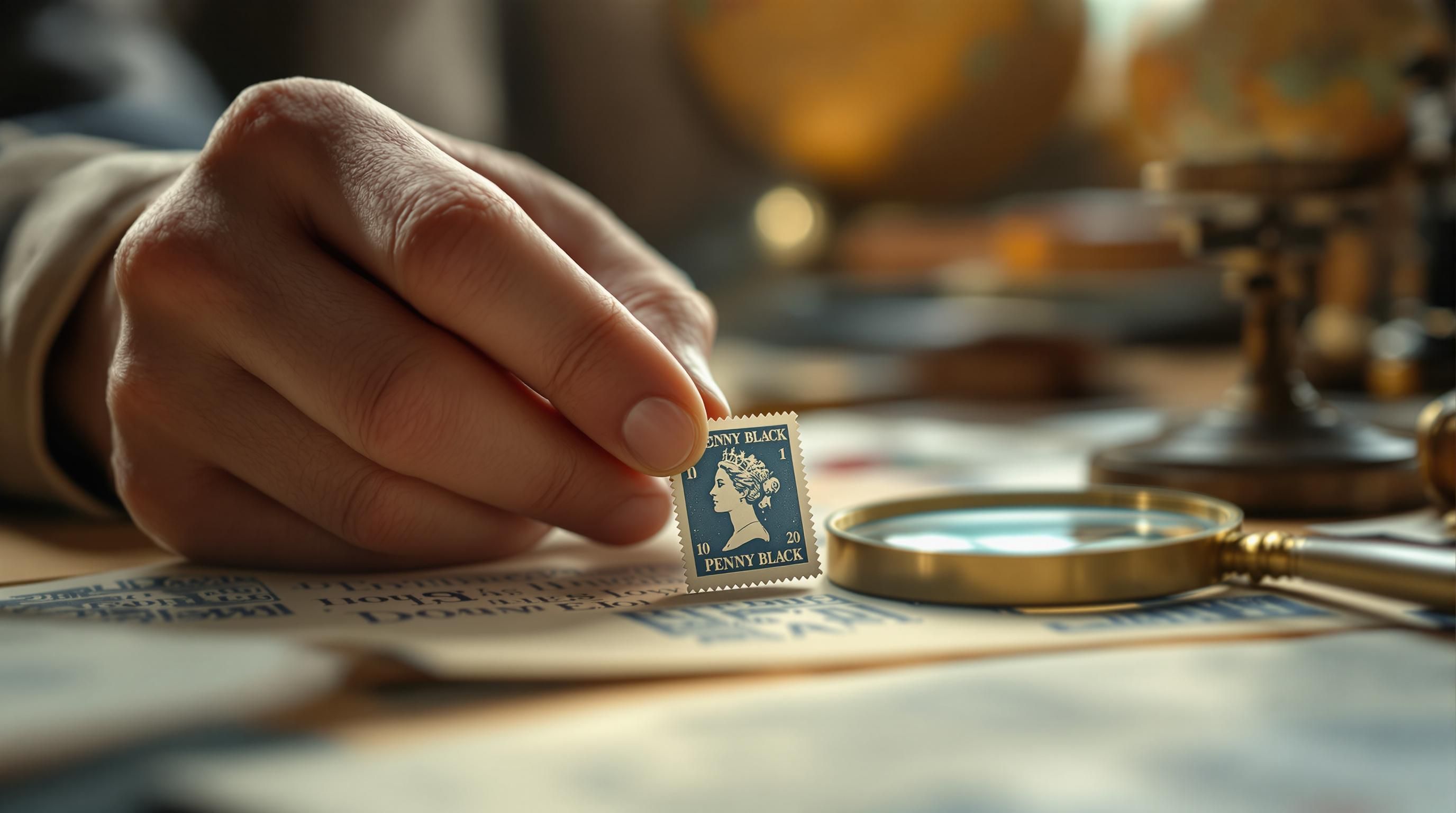Understanding the Value of Old Stamps
The world of philately—stamp collecting—is both fascinating and potentially lucrative. While most collectors engage in the hobby for the historical significance and artistic merit of stamps, others are drawn to the potential value of rare specimens. But just how much are old stamps worth? The answer varies dramatically depending on several key factors.
The Reality of Stamp Values
Of that remaining 2%, about half are worth between $10 and $100, while the truly valuable stamps—just 1% of all stamps in existence—can command prices ranging from hundreds to millions of dollars.
Stamp Value Distribution
What Makes a Stamp Valuable?

Key Factors That Determine Stamp Value
Rarity
The rarest stamps are typically the most valuable. Rarity can stem from:
- Limited printing runs: Stamps that were printed in small quantities
- Printing errors: Mistakes that weren’t caught before distribution
- Historical events: Stamps that were quickly withdrawn from circulation due to political changes or other circumstances
For example, according to Mystic Stamp Company, the 1868 15¢ Lincoln stamp with Z-grill is one of the rarest U.S. stamps, with only two known examples in existence.
Condition
Condition is perhaps the single most important factor affecting a stamp’s value. According to experts at Warwick & Warwick, stamps are graded on several aspects:
Stamp Condition Assessment Factors
Key elements that determine a stamp's condition grade
- Centering (how well the design is centered within the margins)
- Gum condition (for mint/unused stamps)
- Presence of hinge marks (indicating previous mounting)
- Perforations (completeness and condition)
- Color vibrancy
- Paper quality
- Cancellation quality (for used stamps)
A stamp in “superb” condition can be worth many times more than the same stamp in merely “fine” condition.
Historical Significance
Stamps associated with significant historical periods or events often command premium prices. For example, stamps from:
- The Civil War era
- Early independent countries
- Transitional political periods
- Commemorative editions marking important events
Age
While age alone doesn’t determine value, very early stamps from the dawn of philately (1840s-1860s) tend to be more valuable due to their historical significance and typically lower survival rates.
Country of Origin
Some countries’ stamps are particularly sought after by collectors. According to collecting experts, stamps from the following countries often command higher prices:
- British Commonwealth countries (especially early issues)
- United States
- China (particularly early 20th century issues)
- German states (pre-unification)
Most Valuable Rare Stamps
Record-Breaking Stamp Values
World's Most Valuable Stamps
Record auction prices for the rarest stamps
</tbody>
</table>
According to Vinovest, the British Guiana 1c Magenta is often called the “Mona Lisa of stamps” and has broken auction records multiple times. The sole surviving example was most recently purchased by Stanley Gibbons, a prominent stamp dealer, in 2021.
Evolution of Rare Stamp Values
- 1840
First Adhesive Postage Stamp
The Penny Black, the world's first adhesive postage stamp, was issued in Great Britain. Though historic, it's relatively common with millions printed, valued at $100-300 today depending on condition. - 1856
British Guiana 1c Magenta Created
The stamp was created as an emergency issue when a shipment of stamps from England was delayed. Only one copy has survived to the present day. - 1918
Inverted Jenny Printing Error
A sheet of 100 stamps featuring an upside-down Curtiss JN-4 airplane was sold. Individual stamps now sell for hundreds of thousands to over a million dollars. - 1980s
Stamp Collecting Boom
Prices for rare stamps rose dramatically as investors entered the market alongside traditional collectors. - 2021
Record Auction Price
The British Guiana 1c Magenta sold for $9.48 million, cementing its status as the world's most valuable stamp.
Valuable U.S. Stamps to Look For
High-Value American Stamps
Pre-1900 Valuable U.S. Stamps
Valuable 19th Century U.S. Stamps
Market values for mint condition stamps
| Category | Price | Notes |
|---|---|---|
| British Guiana 1c Magenta (1856) | $9.48 million | Sold in 2021; only one known to exist |
| Inverted Jenny (1918) | $1.35 million | Printing error showing upside-down airplane |
| Treskilling Yellow (1855) | $2.6 million | Swedish color error, only one known copy |
| Mauritius "Post Office" (1847) | $1.67 million | Famous error with only 26 known examples |
| The Whole Country is Red (1968) | $890,000 | Chinese political stamp withdrawn from circulation |
</tbody>
</table>
20th Century Valuable U.S. Stamps
Some notable 20th-century U.S. stamps that command high prices include:
1918 24¢ Inverted Jenny - The most famous U.S. stamp error showing an upside-down airplane, valued at $600,000 to over $1.5 million depending on condition and specific example.
1901 Pan-American Exposition Inverts - These printing errors (inverted centers) can be worth $25,000 to $150,000 depending on the specific denomination.
1922-25 Regular Issue Rarities - Certain varieties of this common series, such as the 1¢ Franklin rotary press sheet stamp, can sell for $20,000+ in quality condition.
1909 Bluish Paper Varieties - Special experimental paper varieties from this year can fetch $10,000 to $100,000 depending on denomination and condition.
Graf Zeppelin Series (1930) - While not ultra-rare, these popular airmail stamps featuring the famous German airship can be worth $1,000 to $3,000 for a mint set in excellent condition.
Identifying Value in Common Stamps
Varieties and Errors
Printing errors and variations can dramatically increase a stamp’s value:
- Color errors: Wrong colors used during printing
- Missing colors: One or more colors absent from the design
- Inverted centers: Center design printed upside-down
- Double impressions: Design printed twice
- Missing perforations: Imperforate or partially perforated stamps
- Watermark variations: Unusual or wrong watermarks
Covers and Postal History
Stamps still attached to their original envelopes (known as “covers”) can be worth significantly more than the same stamps off-cover, particularly if they feature:
- Historical postmarks
- Unusual destinations
- Wartime mail
- First day of issue
- Special routes (e.g., Pony Express)
How to Determine Your Stamps’ Value

Stamp Valuation Methods
Research Resources
Before seeking professional appraisal, you can conduct preliminary research using these valuable resources:
Stamp Catalogs: Industry-standard references include:
- Scott Standard Postage Stamp Catalogue
- Stanley Gibbons Stamp Catalogue
- Michel Stamp Catalogue
- Yvert et Tellier Catalogue
Online Databases: Several websites offer searchable stamp databases:
- Find Your Stamps Value - Allows photo-based identification
- Hobbizine - Specializes in U.S. stamps
- Mystic Stamp Company - Extensive reference materials
Auction Records: Review recent sales of similar stamps through:
- Heritage Auctions
- Siegel Auction Galleries
- Spink
- Cherrystone Auctions
Professional Appraisal Options
For valuable collections or rare stamps, professional appraisal is recommended:
Professional Appraisal Methods
According to Warwick & Warwick, many auction houses and specialized stamp dealers offer free initial appraisals, hoping to eventually broker a sale if the stamps prove valuable.
Digital Tools
Modern technology has made stamp identification and valuation more accessible:
- Stamp Identification Apps: Applications that use image recognition to identify stamps
- Online Forums: Communities like Stamp Community Forum where experts help identify unusual stamps
- Digital Catalogs: Electronic versions of major stamp catalogs with search capabilities
Selling Valuable Stamps
Options for Selling Your Stamps
Auction Houses
For rare and high-value stamps, specialized philatelic auction houses often achieve the best prices:
- Advantages: Access to serious collectors, expert marketing, global reach
- Disadvantages: Commission fees typically 15-25%, may only accept higher-value items
- Notable Houses: Siegel Auction Galleries, H.R. Harmer, Spink, Heinrich Köhler
Stamp Dealers
Professional stamp dealers can offer immediate payment:
- Advantages: Quick turnaround, no auction waiting period, expertise in evaluation
- Disadvantages: Typically offer 50-70% of retail value to allow for profit margin
- Finding Reputable Dealers: Look for members of the American Philatelic Society or similar national organizations
Online Marketplaces
The digital marketplace provides several options:
- eBay: Largest audience but requires knowledge of proper listing techniques
- Specialized Philatelic Sites: Hipstamp, Delcampe, StampCircuit
- Social Media Stamp Groups: Facebook has active stamp collecting/trading communities
Direct to Collectors
Selling directly to collectors can maximize your return:
- Stamp Shows: Attend philatelic exhibitions and shows where dealers and collectors gather
- Collector Clubs: Join philatelic societies to network with potential buyers
- Online Forums: Participate in dedicated stamp collecting communities
Preserving Stamp Value
Proper Care and Storage
Essential Storage Materials
Recommended Stamp Storage Supplies
Materials needed for proper stamp preservation
- Acid-free stockbooks or albums
- Stamp mounts or hingeless album pages
- Stamp tongs (never handle valuable stamps with fingers)
- Watermark detection fluid (for identification)
- Perforation gauge
- Magnifying glass (10x or greater)
Environmental Factors
According to conservation experts, maintain these environmental conditions:
- Temperature: 65-72°F (18-22°C)
- Humidity: 40-50% relative humidity
- Light: Minimal exposure to light, especially UV
- Air Quality: Store away from pollutants, smoke, and chemicals
Insurance Considerations
For valuable stamp collections:
- Document your collection thoroughly with photographs and detailed descriptions
- Consider specialized collectibles insurance
- Store extremely valuable items in bank safety deposit boxes
- Keep appraisal documents updated every 3-5 years as market values change
The Future of Stamp Collecting and Values
Market Trends and Investment Potential
Current Market Trends
According to recent market analysis:
- High-End Rarities: Continue to achieve record prices at auction, demonstrating resilience even during economic downturns
- Mid-Range Stamps: More volatile market with uneven performance
- Common Material: Declining in real value over time due to decreasing collector base
- Specialized Areas: Postal history, errors, and specific historical periods showing stronger performance than general collections
Digital Impact
The digital age has transformed stamp collecting in several ways:
- Online Marketplaces: Greater price transparency and global access to stamps
- Digital Collections: Some collectors maintaining virtual collections alongside physical ones
- Knowledge Sharing: Vast resources available online for research and education
- Demographic Shifts: Aging traditional collector base contrasted with younger collectors discovering niche areas
Investment Considerations
For those considering stamps as investments:
- Focus on quality over quantity
- Prioritize rare stamps with established auction records
- Understand that illiquidity is a factor (stamps can take time to sell)
- Consider authentication and certification for valuable items
- Develop specialized knowledge in specific collecting areas
External Resources for Stamp Valuation
Find Your Stamps Value
Online platform allowing stamp identification through photo uploads and text descriptions, with a comprehensive catalog and valuation database.
Mystic Stamp Company - Rare Stamps Guide
Detailed guide to rare and valuable US stamps with current market values and historical information.
Stamp World - Stamp Values Guide
Comprehensive guide explaining how stamp values are determined and what percentage of stamps have significant value.
Warwick & Warwick Stamp Appraisal Guide
Professional advice on appraising stamps from an established auction house, including condition assessment and free valuation services.
Hobbizine United States Stamp Value Guide
Searchable database of U.S. stamp values with price comparisons for both mint and used conditions.
Vinovest - Rare Stamps Investment Guide
Analysis of rare stamps as alternative investments, featuring 13 of the most valuable stamps to collect and their auction records.
Sell Unused Stamps - Current Values
Up-to-date price guide for current stamp values, focusing on both vintage and modern unused stamps.
Common Questions About Old Stamp Values
Frequently Asked Questions About Old Stamp Values
Can I use stamps that are 20 years old for mailing?
Yes, you can use old stamps for mailing if they have not been previously used (canceled). Most postage stamps retain their face value indefinitely and do not expire. "Forever" stamps will always cover the current first-class mail rate regardless of when they were purchased.
However, if your stamps are potentially valuable to collectors, you might want to have them appraised before using them for postage, as their collector value could far exceed their face value.
How can I tell if my old stamps are valuable?
To determine if your stamps have significant value beyond face value:
- Check for rarity (limited printing runs or errors)
- Assess condition (mint/unused stamps with original gum are typically worth more)
- Look for perfect centering (well-centered stamps command premium prices)
- Check watermarks and perforation types (variants can be valuable)
- Research historical significance (stamps from important historical periods)
Use a stamp catalog or online database to identify your stamps, or consult with a professional stamp dealer for valuable or rare specimens.
Does the condition of old stamps significantly affect their value?
Yes, condition is one of the most critical factors in determining a stamp's value. The difference between a stamp in "superb" condition versus one in merely "good" condition can be enormous—sometimes 10x or more in price.Key condition factors include:
- Centering (how well the design is centered within the margins)
- Original gum (for unused stamps)
- Presence/absence of hinge marks
- Perforation completeness
- Color freshness
- Paper quality
- Cancellation quality (for used stamps)
Even minor flaws like thin spots, creases, or heavy cancellations can dramatically reduce a stamp’s value.
What are the most valuable U.S. stamps to look for?
Some of the most valuable U.S. stamps include:
- 1868 Benjamin Franklin Z-Grill (approximately $3 million)
- 1918 24¢ Inverted Jenny (upside-down airplane, $600,000 to $1.5+ million)
- 1867 Abraham Lincoln Z-Grill (approximately $1 million)
- 1869 Pictorial Inverts (especially the 24¢ Declaration, $250,000+)
- 1857-61 1¢ Franklin Type I ($5,000 to $100,000+ depending on condition)
- 1901 Pan-American Exposition Inverts ($25,000 to $150,000)
- 1893 Columbian Exposition high values in mint condition ($1,000 to $10,000+)
- 1909 Bluish Paper varieties ($10,000 to $100,000 depending on denomination)
Values can vary significantly based on condition, centering, and specific characteristics.
Where can I get my old stamps appraised?
Several options exist for getting stamp appraisals:
- Local stamp dealers: Many offer free initial assessments
- Auction houses: Major philatelic auction houses provide appraisal services
- Stamp shows: Experts are often available for quick appraisals
- Philatelic societies: Organizations like the American Philatelic Society offer member services
- Online services: Several websites allow you to submit photos for preliminary evaluations
For valuable stamps or large collections, consider getting multiple appraisals and look for appraisers with credentials from recognized philatelic organizations.
How should I store valuable old stamps to preserve their value?
Proper storage is essential for maintaining stamp value:
- Use acid-free stockbooks or albums designed specifically for stamps
- Store stamps in a controlled environment: 65-72°F (18-22°C) and 40-50% relative humidity
- Keep stamps away from direct sunlight and fluorescent lighting
- Handle stamps only with stamp tongs, never with fingers
- Use stamp mounts or hingeless album pages rather than hinges for valuable stamps
- Store mint stamps (with gum) away from moisture to prevent sticking
- Consider archival-quality sleeves for particularly valuable individual stamps
For extremely valuable stamps, consider a safety deposit box with appropriate environmental controls.
Are stamp errors always valuable?
While many stamp errors are valuable, not all errors command high prices. Value depends on:
- Type of error: Major errors like inverted centers or missing colors typically have higher value than minor shifts or misperforations
- Rarity: How many examples of the error exist
- Notoriety: Whether the error is well-known among collectors
- Age and origin: Errors from certain periods or countries are more sought after
- Condition: As with all stamps, condition greatly affects value
Some common errors like slight color variations or minor misperforations may add minimal value, while dramatic errors like the Inverted Jenny can be worth millions.
How has the stamp collecting market changed in recent years?
The philatelic market has undergone significant changes:
- Polarization: Growing divide between high-end rarities (which continue to appreciate) and common material (which struggles to maintain value)
- Demographic shifts: Traditional collector base aging, with younger collectors focusing on specialized niches
- Digitalization: Online marketplaces providing greater price transparency and global access
- Information access: Vast resources available online, changing how collectors research and authenticate stamps
- Investment perspective: More collectors viewing rare stamps as alternative investments
- Authentication importance: Greater emphasis on professional certification for valuable items
Despite challenges, the market for rare and significant stamps remains strong, with auction records continuing to be set for exceptional items.
Conclusion
The world of old stamp values is complex and fascinating, where history, artistry, and rarity intersect to create items of significant worth. While most stamps in existence are worth only their face value, the precious few that combine exceptional rarity, perfect condition, and historical significance can command prices that rival fine art.
For collectors and inheritors of stamp collections, understanding the factors that contribute to stamp values is essential. Age alone rarely determines worth—instead, it’s the combination of rarity, condition, historical importance, and collector demand that creates truly valuable philatelic treasures.
Whether you’re a seasoned philatelist or someone who has recently inherited stamps, taking the time to properly identify, research, and if necessary, seek professional appraisal for your stamps can be rewarding both intellectually and potentially financially. Just remember that the true value of stamp collecting extends beyond monetary considerations into the realm of historical appreciation and the joy of preserving cultural artifacts for future generations.
Get a Professional Appraisal
Unsure about your item’s value? Our certified experts provide fast, written appraisals you can trust.
- Expert report with photos and comps
- Fast turnaround
- Fixed, upfront pricing
No obligation. Secure upload.
| Category | Price | Notes |
|---|---|---|
| 1868 15¢ Lincoln Z-Grill | $1+ million | Only two known examples |
| 1857-61 1¢ Franklin (Type III) | $1,850 - $15,000 | Depending on condition and specific variety |
| 1857-61 1¢ Franklin (Perforated 15) | $6,295 - $27,500 | Rare perforation variant |
| 1867 15¢ Lincoln (Z-Grill) | $150,000+ | Extremely rare grill pattern |
| 1869 24¢ Declaration of Independence (Inverted Center) | $250,000+ | Printing error with inverted center design |




